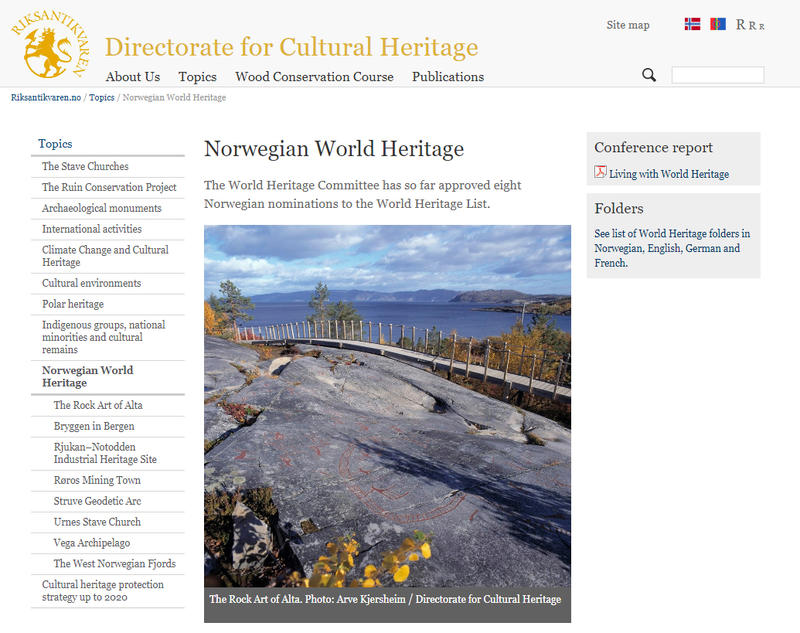In 2018, 1073 places are listed as World Heritage. Norway has eight sites on UNESCO’s World Heritage List. These are:
Bryggen in Bergen (1979)
Urnes Stave Church (1979)
Røros Mining Town and the Circumference (1980/2010)
Rock Art of Alta (1985)
The Vega Archipelago (2004)
West Norwegian Fjords (2005)
Struve Geodetic Arc (2005)
Rjukan-Notodden Industrial Heritage Site (2015)
Here you can find presentations of the Norwegian World Heritage Sites.
Tentative list
A Tentative List is an inventory of those properties which each State Party intends to consider for nomination. On UNESCO's web site you can study which properties that are on the Norwegian tentative list.
UNESCO in Norway
The Ministry of Foreign Affairs is in charge of Norwegian foreign affairs, including UNESCO activities. Co-ordination of UNESCO initiatives in Norway is managed by the Ministry of Education and Research. This ministry is also in charge of implementing the Education and Sciences Programmes in Norway. The Ministry of Culture is responsible for UNESCO´s Culture and Communication programmes, while the Ministry of Government Administration, Reform and Church Affairs handles questions concerning indigenous people. The Ministry of Environment is responsible for all environmental matters in UNESCO, and for implementing the World Heritage Convention in Norway.
While the ministries are responsible for Norway’s official UNESCO policy, the Norwegian National Commission for UNESCO, consisting of 12 representatives from the civil society, forms a linkage between the civil society and Norwegian authorities.
(Source: UNESCO Norway)
World Heritage Norway
World Heritage Norway is the name of the organisation representing all the eight sites, and the four points on Struve’s Geodetic Arc, which are inscribed on the UNESCO list of cultural and natural heritage sites.
World Heritage Norway was founded in 2007. Read more about World Heritage Norway.
Learn more about World Heritage

Directorate for Cultural Heritage
Directorate for Cultural Heritage about World Heritage in Norway.
